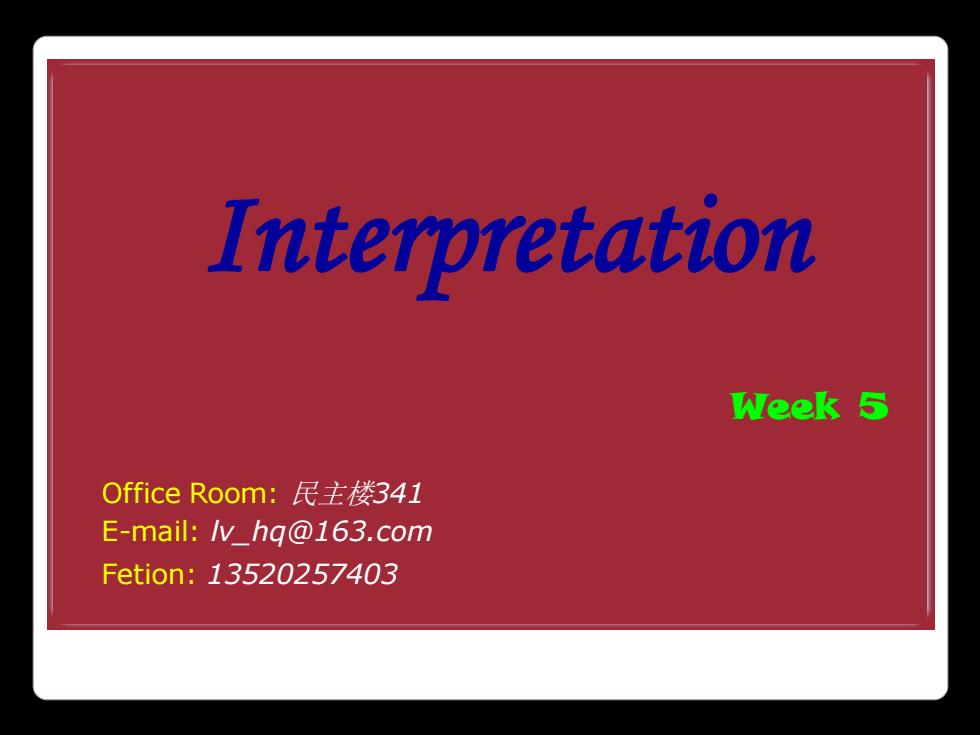
Interpretation Week 5 Office Room:民主楼341 E-mail:Iv_hq@163.com Fetion:13520257403
Interpretation Week 5 Office Room: 民主楼341 E-mail: lv_hq@163.com Fetion: 13520257403
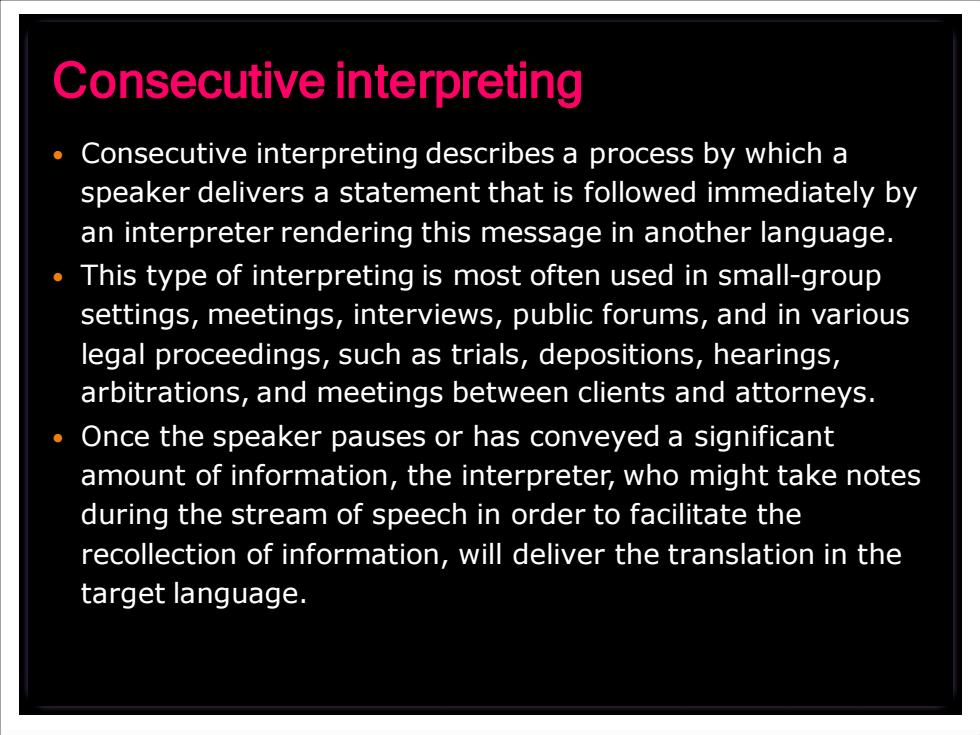
Consecutive interpreting Consecutive interpreting describes a process by which a speaker delivers a statement that is followed immediately by an interpreter rendering this message in another language. This type of interpreting is most often used in small-group settings,meetings,interviews,public forums,and in various legal proceedings,such as trials,depositions,hearings, arbitrations,and meetings between clients and attorneys. Once the speaker pauses or has conveyed a significant amount of information,the interpreter,who might take notes during the stream of speech in order to facilitate the recollection of information,will deliver the translation in the target language
Consecutive interpreting describes a process by which a speaker delivers a statement that is followed immediately by an interpreter rendering this message in another language. This type of interpreting is most often used in small-group settings, meetings, interviews, public forums, and in various legal proceedings, such as trials, depositions, hearings, arbitrations, and meetings between clients and attorneys. Once the speaker pauses or has conveyed a significant amount of information, the interpreter, who might take notes during the stream of speech in order to facilitate the recollection of information, will deliver the translation in the target language. Consecutive interpreting
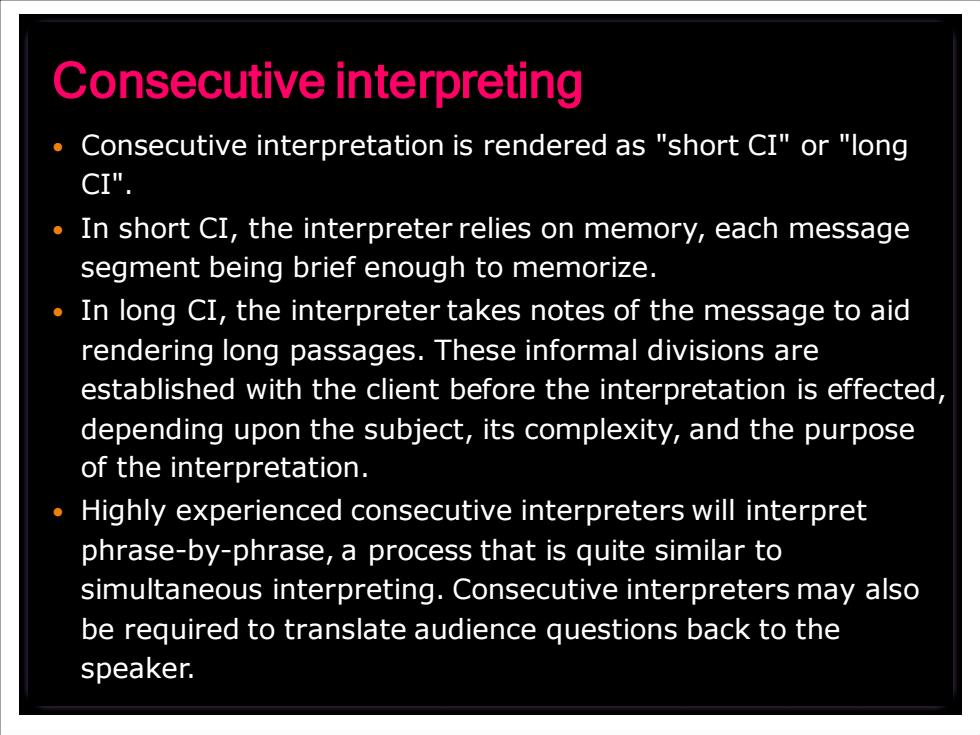
Consecutive interpreting Consecutive interpretation is rendered as "short CI"or "long CI". In short CI,the interpreter relies on memory,each message segment being brief enough to memorize. In long CI,the interpreter takes notes of the message to aid rendering long passages.These informal divisions are established with the client before the interpretation is effected, depending upon the subject,its complexity,and the purpose of the interpretation. Highly experienced consecutive interpreters will interpret phrase-by-phrase,a process that is quite similar to simultaneous interpreting.Consecutive interpreters may also be required to translate audience questions back to the speaker
Consecutive interpretation is rendered as "short CI" or "long CI". In short CI, the interpreter relies on memory, each message segment being brief enough to memorize. In long CI, the interpreter takes notes of the message to aid rendering long passages. These informal divisions are established with the client before the interpretation is effected, depending upon the subject, its complexity, and the purpose of the interpretation. Highly experienced consecutive interpreters will interpret phrase-by-phrase, a process that is quite similar to simultaneous interpreting. Consecutive interpreters may also be required to translate audience questions back to the speaker. Consecutive interpreting
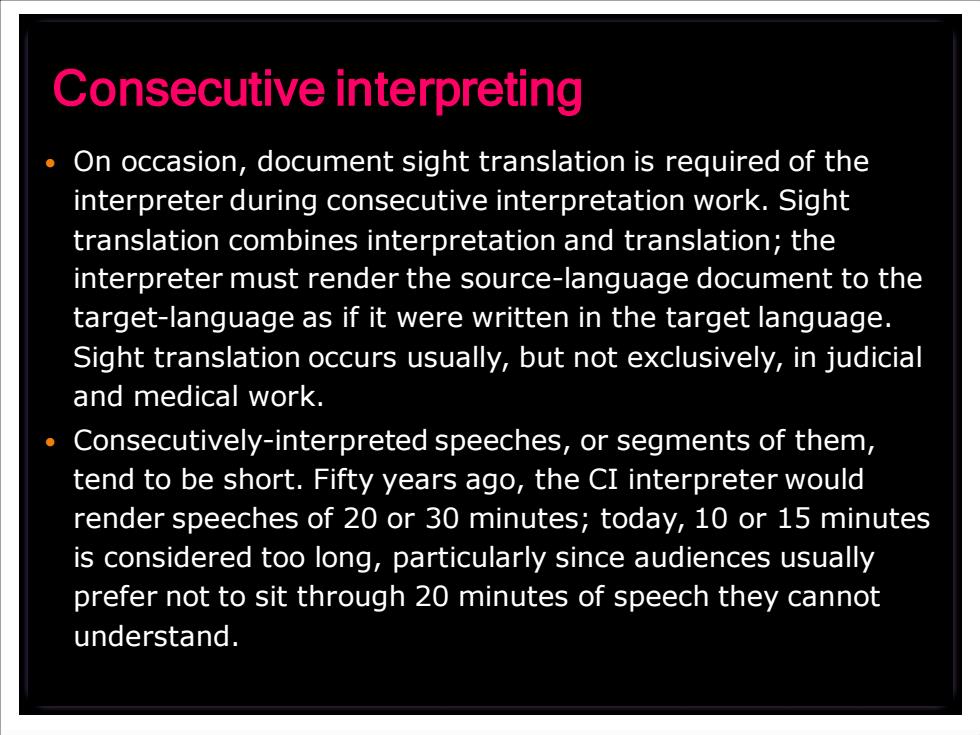
Consecutive interpreting On occasion,document sight translation is required of the interpreter during consecutive interpretation work.Sight translation combines interpretation and translation;the interpreter must render the source-language document to the target-language as if it were written in the target language. Sight translation occurs usually,but not exclusively,in judicial and medical work. Consecutively-interpreted speeches,or segments of them, tend to be short.Fifty years ago,the CI interpreter would render speeches of 20 or 30 minutes;today,10 or 15 minutes is considered too long,particularly since audiences usually prefer not to sit through 20 minutes of speech they cannot understand
On occasion, document sight translation is required of the interpreter during consecutive interpretation work. Sight translation combines interpretation and translation; the interpreter must render the source-language document to the target-language as if it were written in the target language. Sight translation occurs usually, but not exclusively, in judicial and medical work. Consecutively-interpreted speeches, or segments of them, tend to be short. Fifty years ago, the CI interpreter would render speeches of 20 or 30 minutes; today, 10 or 15 minutes is considered too long, particularly since audiences usually prefer not to sit through 20 minutes of speech they cannot understand. Consecutive interpreting
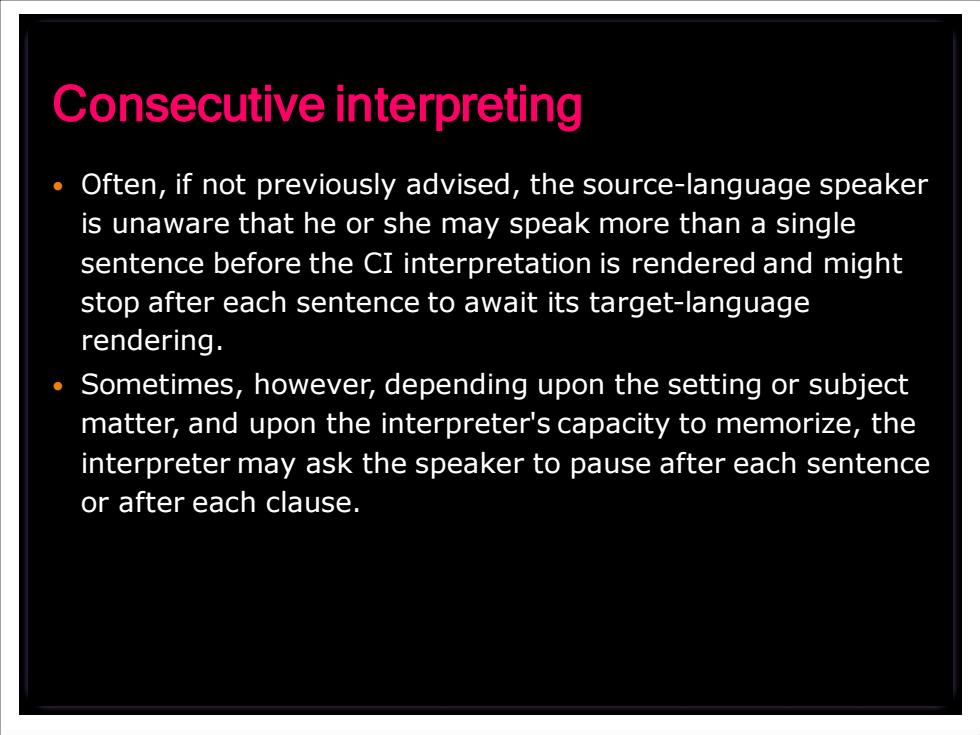
Consecutive interpreting Often,if not previously advised,the source-language speaker is unaware that he or she may speak more than a single sentence before the CI interpretation is rendered and might stop after each sentence to await its target-language rendering. Sometimes,however,depending upon the setting or subject matter,and upon the interpreter's capacity to memorize,the interpreter may ask the speaker to pause after each sentence or after each clause
Often, if not previously advised, the source-language speaker is unaware that he or she may speak more than a single sentence before the CI interpretation is rendered and might stop after each sentence to await its target-language rendering. Sometimes, however, depending upon the setting or subject matter, and upon the interpreter's capacity to memorize, the interpreter may ask the speaker to pause after each sentence or after each clause. Consecutive interpreting